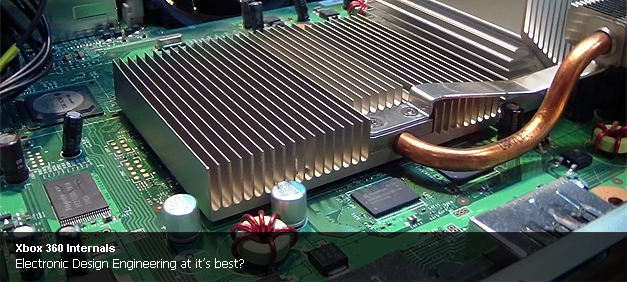Just what is Electronic Design?
Electronic Designers are the primary creators and producers of all modern consumer, automotive, and military based electronics. Electronic Designers are responsible for many products we love and use on a daily basis such as Ipods, cell phones, laptops, and PCs. Decisions made by Electronic Designers affect our everyday life such as what features a given product will have, how much will it cost, and how long it will continue to perform.
Electronic Designers are the primary creators and producers of all modern consumer, automotive, and military based electronics. Electronic Designers are responsible for many products we love and use on a daily basis such as Ipods, cell phones, laptops, and PCs. Decisions made by Electronic Designers affect our everyday life such as what features a given product will have, how much will it cost, and how long it will continue to perform.
What does an Electronic Designer do?
The primary objective on an electronic designer is to create a working, reliable, and low cost embedded solution to meet various customer requirements. The production of such products is best explained by observing the Electronic Design Life Cycle. Below is an example of what an electronic design development life cycle may look like for a given engineer.
 Electronic Design Life Cycle Phases:
Electronic Design Life Cycle Phases: Requirements Phase: Obtain all information possible from a given customer/group regarding what features and specifications are desired for a given product.
Detailed Design Phase: Based upon requirements, select key components such as micro processing unit and graphical processing unit if needed. In addition, design all individual sub-circuits required to perform specific tasks/features. Compile all sub-circuits into a master schematic.
Prototype Creation Phase: Pass off master schematic to PCB (Printed Circuit Board) Designers for the development of a prototype. Electronic Design Engineers will then proceed to assist PCB Designers in the trace layout of sensitive and critical circuits.
Product Test Phase: Confirm that newly created prototype functions as expected and that all circuits meet their requirements. In addition, run product durability tests such as vibration, drop testing, halt, and thermal shock to confirm integrity of product.
Product Evaluation Phase: Create a list of non compliant circuits / bugs with product. Based upon evaluation of requirements and overall functionality, decide whether or not to produce the product in mass quantity. If evaluation of a product fails, production is skipped and the life cycle is restarted again at requirement phase.
Production Phase: At this point the product should be guaranteed to meet the requirements and satisfaction of the client. The product is then mass produced and Electronic Design Engineers support production if trouble arises. They may also assist in creation mass quantity testers to confirm the integrity and functionality of units off of the given product assembly line.
Phase Summary: The above list summarizes an example of what one electronic design life cycle may look like. All of this depends on the particular company and the product that is being created. Should the customer be satisfied and their be sufficient consumer need, this process may be repeated for new production revisions.
What is the future of the industry?
The Electronic Design Industry continues to grow with the increased demand for new high tech products. The largest demand for Electronic Design Engineering stems from the commercialization of electronic products. For about the past century, companies have been in a constant technological competition for the most advance and appealing consumer products. Provided continued improvements in technology are discovered, the demand for more advanced products will only increase. Another large demand for Electronic Design is in the recently developing "Green" business. Currently, the world is facing an energy crisis as former fuel sources are depleted or are no longer desired. The assistance of the electronic design industry will be instrumental in order to produce renewable, clean, and efficient energy. This particular road block is critical to the future of the industry as well as the future of numerous other related industries.
In Summary: An Electronic Design Engineer is a producer of consumer, automotive, and military based electronics. Electronic Design Engineering is relevant to all of us for it produces many of the products that we use on a daily basis such as cellphones, tablets, and computers. The job of an Electronic Design Engineer is modeled by the Electronic Design Life-cycle which includes requirement, design, prototype, test, evaluation, and production phases. Finally, "Green Products" in addition to consumer electronics will dictate the survival of the industry as well as the survival of numerous other industries that rely on electronic products.


Very well organized. The visuals look very good and the information was well written.
ReplyDeleteVery well written and easy to follow.
ReplyDeleteEasy to read, well organized, and great use of visuals.
ReplyDeleteGreat article. Very organized. Graphic really blends well.
ReplyDeleteThis is very well organized. I like how it pops out and everything has a title that engages the audience to know what they are learning about next. Very well done.
ReplyDeleteThis is a really well written article. I like how you organized it and incorporated visuals. The graphics of the page also made it very easy to read. I personally liked how you used a summary paragraph in closing because it reiterated your main points and helps the reader recall what they read.
ReplyDeleteGood job. There was lots of good information and it was really nicely put together. Really good work overall.
ReplyDeleteWell written article, Nathan I now have a better understanding of the work of electric designers. Thanks!
ReplyDeleteThank you very much for providing such brilliant clarity in few words. I was grappling with this topic for quite some time, until I stumbled on to your site. Merry Christmas in advance.
ReplyDeleteThanks for sharing
ReplyDeleteElectronic CADD